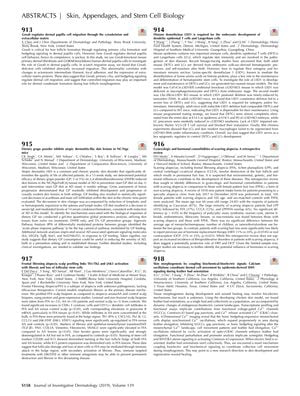Skin Morphogenesis by Coupling Biochemical-Bioelectric Signals: Calcium Oscillations Coordinate Dermal Cell Movement by Epidermis-Derived SHH Signaling During Feather Bud Orientation
April 2019
in “
Journal of Investigative Dermatology
”
calcium oscillations Sonic hedgehog signaling SHH bioelectric currents mesenchymal cells voltage-gated calcium channels VGCCs Connexin-43 gap junctions calcium release-activated calcium channels CRAC channels optogenetically induced calcium oscillations Hedgehog signaling WNT/B-Catenin signaling electric field skin morphogenesis regenerative wound healing calcium channels WNT signaling skin development wound healing

TLDR Calcium signals and SHH guide the direction of feather growth in chicken skin.
The study from May 2019 explored how calcium oscillations and Sonic hedgehog (SHH) signaling influence the orientation of feather buds in chicken skin development. Researchers discovered that these orientations are linked to changes in bioelectric currents and that mesenchymal cells responding to SHH show synchronized calcium oscillations. These oscillations, which increase during feather growth, are affected by various channels and junctions, including voltage-gated calcium channels (VGCCs), Connexin-43 based gap junctions, and calcium release-activated calcium (CRAC) channels. Disruption of VGCCs, gap junctions, or SHH signaling led to changes in the calcium landscape, cell movement, and feather bud growth. Optogenetically induced calcium oscillations were found to promote feather bud elongation. The study also revealed that Hedgehog and WNT/B-Catenin signaling together stimulate Connexin-43 expression. Reorienting the electric field caused feather bud orientations to swirl, indicating a new mechanism that links bioelectric and biochemical signals to direct collective cell movement during skin morphogenesis, with potential applications in skin development and regenerative wound healing.


